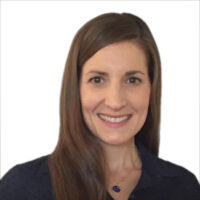May 1, 2019 – HHS and CMS launched a set of new payment models, dubbed the Primary Cares Initiative, that aim to transform primary care through value-based options. The new models will also test financial risk and performance-based payments for primary care practitioners and clinicians.
The initiative, which is voluntary, includes five new payment models under two paths:
- Primary Care First (PCF): The PCF path provides smaller primary care practices a flat revenue stream for each patient, for which they are paid a bonus when a patient remains healthy and out of the hospital. Practices will be responsible for added costs––up to a determined share of their revenue––if patients end up sicker than expected.
- Models:
- Primary Care First (PCF): This model will provide payment to advanced primary care practice sites through a total monthly payment that includes a population-based payment along with a flat primary care visit fee, and a performance-based adjustment providing an upside of up to 50 percent of revenue as well as a small downside (10 percent of revenue), assessed and paid quarterly.
- PCF High Needs Population: This model will offer more money to advanced primary care practices – those practices whose clinicians are enrolled in Medicare and typically provide hospice or palliative care services – that specialize in care for high need patients, including those with complex, chronic needs and seriously ill populations.
- Eligibility: The PCF models are based on the principles of the existing Comprehensive Primary Care (CPC+) model design. Thus, only primary care practices that are located in one of the selected Primary Care First regions are eligible to apply. Specific eligibility requirements and additional information can be found on the model page and fact sheet.
- Timeline: PCF will be tested for five years beginning in January 2020, with applications accepted beginning this spring. A second round is also planned for January 2021.
- Models:
- Direct Contracting (DC): Under DC, which is intended for larger practices, practices will also see bonuses for healthier patients, but they will also take on downside risk across the system for sicker and costlier patients––not just the extra health spending at their own practice. Practices could potentially get higher payments for addressing patients with specific diagnoses and chronic illnesses.
- Models:
- DC Global: Participants bear full financial risk, taking 100 percent accountability for savings and losses.
- DC Professional: Participants share risk with CMS and will be eligible for 50 percent of shared savings and bear risk for 50 percent of shared losses on the total cost of care. Participants will also receive “Primary Care Capitation,” a capitated, risk-adjusted monthly payment for enhanced primary care services equal to seven percent of the total cost of care for enhanced primary care services.
- DC Geographic: Participants assume responsibility for the total cost of care and health needs of a population in a defined target region. Participants would be selected as part of a competitive application process and commit to providing CMS a specified discount amount off the total cost of care for the defined target region.
- Models:
-
- Eligibility: The Professional and Global options seek to engage a broader variety of organizations than have previously participated in CMS models and programs, including organizations that are new to Medicare FFS and Medicaid MCOs that can take on risk for Medicare FFS spending for dually eligible members. The Geographic PBP option may also attract participation from organizations such as health plans, health care technology companies, and other entities. Current Medicare ACOs will be eligible to participate in all three payment model options. Specific eligibility requirements and additional information can be found on the model page and fact sheet.
- Timeline: CMS is seeking input on the DC model, which it hopes to launch the global and professional models in mid-2020. The geographic model is expected to launch in January 2021.
HHS and CMS stated the models will give primary care practices more flexibility in how they provide care to patients and potentially receive significant savings.
- “As we seek to unleash innovation in our healthcare system, we recognize that the road to value must have as many lanes as possible,” CMS Administrator Seema Verma said in a statement. “Our Primary Cares Initiative is designed to give clinicians different options that advance our goal to deliver better care at a lower cost while allowing clinicians to focus on what they do best: treating patients.”
- According to a speech given by HHS Secretary Alex Azar, Primary Cares will enroll an estimated 25 percent or more of Medicare fee-for-service beneficiaries, and 25 percent of providers are expected to engage in the arrangements “that pay for keeping patients healthy, rather than ordering procedures.” He stated that “Primary care is a small slice of health spending overall, but it has a significant impact on downstream costs and quality.”
Industry reaction
Industry groups have been largely supportive of the initiative and its aims since the agencies announced the models on April 22. Several industry groups and associations voiced initial support for the payment models, citing the potential for practices to see better Medicare payments in the coming years.
- American Academy of Family Physicians: Applauded the introduction of the new payment models, as well, noting a higher investment in primary care could have a significant impact on patient health. (Note: AAFP Vice Speaker Russell Kohl, M.D. was at the announcement with CMS Administrator Verma and CMMI Director Boehler)
- AHA: “America’s hospitals and health systems are committed to value-based care, and we appreciate CMS’s continued efforts to create additional voluntary payment models for providers,” Ashley Thompson, senior vice president of public policy analysis and development at the AHA, stated “We look forward to learning more about these new models and how they can support our collective efforts to improve the health and well-being of our patients and communities.”
- America’s Physician Groups: Called the Initiative a “win for patients and the physician groups who care for them.”
- Coalition to Transform Advanced Care (C-TAC): Tom Koutsoumpas, C-TAC co-chair and co-founder, said in an official statement that the model “will be a critical component in the continuum of care and we are eager to focus our expertise and resources on bringing that continuum to life.”
- Healthcare Leadership Council (HLC): “One of the most encouraging aspects of the announcement today is the emphasis on the patients who account for the greatest proportion of healthcare costs, those with serious illnesses and multiple chronic conditions,” HLC President Mary R. Grealy said in a statement. “We strongly support the continued movement toward coordinated care for this patient population and the new payment models’ incentives for providers to treat these high-need patients.”
- “Many primary care physicians have been struggling to deliver the care their patients need and to financially sustain their practices under current Medicare payments,” Gerald E. Harmon, MD, immediate past chair of the American Medical Association (AMA) Board of Trustees, said in a statement. “The new primary care payment models announced today will provide practices with more resources and more flexibility to deliver the highest-quality care to their patients.”

